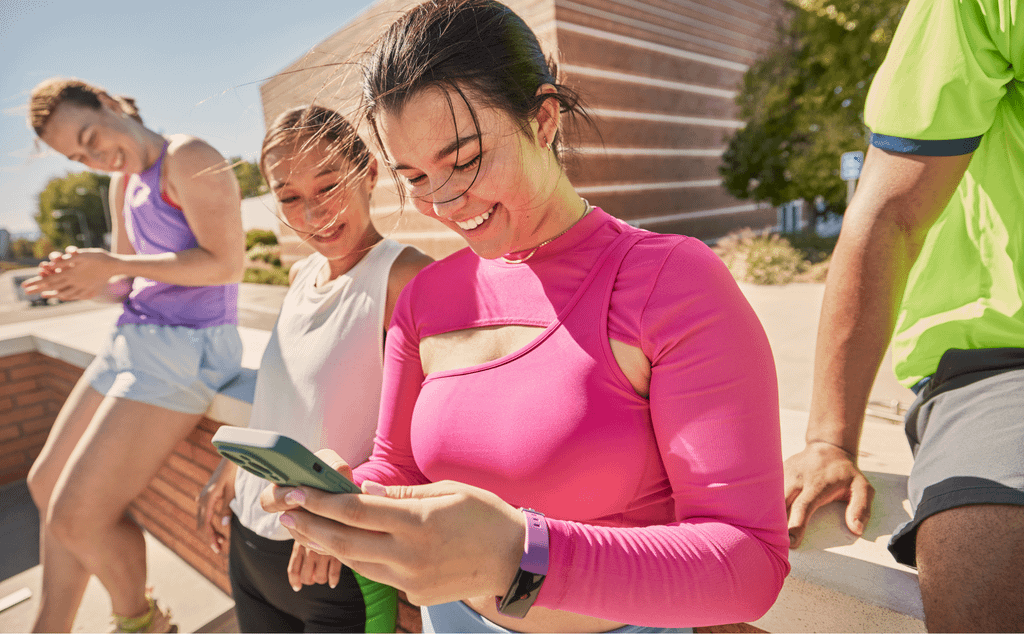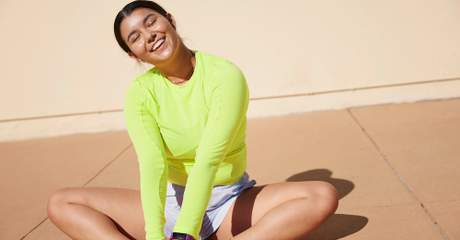Pilates Workout Guide: What It Is, How to Start, and Why It Works
Last Updated Jul 15, 2025

Your back feels stiff. Your core lacks support. Even basic movement feels harder than it should.
When your muscles aren’t working together, simple tasks can leave you sore and drained. That’s where Pilates comes in. This low-impact, science-backed method strengthens your core, improves posture, and supports the way your body moves every day.
You don’t need fancy equipment or hours to spare. Just a consistent routine that fits your lifestyle and helps you build strength from the inside out.
Discover how Pilates can help you move better, feel stronger, and take on your day with confidence!
What Is Pilates?
Pilates is a low-impact, core-focused movement method that helps you build strength from the inside out. Designed by Joseph Pilates in the early 20th century, this practice is all about precision and control. Instead of speeding through reps, you’ll move slowly and intentionally—activating muscles you may not even realize are there.
You won’t leave class drenched in sweat, but don’t be fooled: Pilates is quietly intense. It targets deep stabilizing muscles that support your posture, balance, and everyday movement. Every motion is paired with focused breathing, which helps you build that mind-body connection and stay fully present.
The result is a workout that feels as calming as it is effective.
Pilates vs. Yoga
Pilates and yoga might look similar at a glance, but they’re built on different foundations.
- Pilates is all about functional movement and core strength. It focuses on how your body moves and supports itself, making it a go-to for injury prevention, posture improvement, and overall strength.
- Yoga blends movement with mindfulness. It combines physical poses with breathwork, meditation, and spiritual philosophy to support emotional and mental wellbeing.
Think of it this way: If yoga is about inner stillness, Pilates is about moving with purpose. Both are powerful, but they serve different needs.
Types of Pilates
While all Pilates follows the same core principles of control and flowing movements, there are different styles with varying levels of intensity. These are the most common types of Pilates you’ll find out there:
| Type | Description | Best For |
| Classical Pilates | Follows Joseph Pilates’ original method, with traditional sequences and equipment. Focuses on strict form. | Learning the authentic method and foundational skills. |
| Mat Pilates | Done on a mat using body weight only. No equipment needed. | Beginners and at-home practice. |
| Reformer Pilates | Uses a machine with pulleys and a sliding carriage for resistance and support. | More variety and extra support for precise movement. |
Typical Pilates Equipment
Pilates equipment might look intimidating at first, but each piece has a specific purpose in supporting proper alignment and providing the right amount of challenge for your fitness level. While you can practice Pilates with minimal equipment, here are some of the most helpful and common pieces:
- Mat: A thick, non-slip yoga mat gives you cushioning and stability for floor exercises. Look for mats specifically designed for Pilates, which are typically thicker than yoga mats to provide more support for your spine during rolling movements. If you don’t have a mat, you can even use household items as fitness equipment, like a towel or a thick rug to pad your movements.
- Reformer: This spring-loaded machine with a sliding carriage gives you varying levels of resistance and support for hundreds of exercises. The springs can make movements easier or more challenging, which lets anyone customize their Pilates experience to their liking.
- Cadillac: A large device with a bed-like frame and springs for hundreds of exercises. The Cadillac is excellent for rehabilitation work and is ideal for people with injuries or mobility limitations.
- Chair: A compact piece of equipment with pedals and springs that challenges balance and coordination. It’s especially helpful for building functional strength and improving stability in standing positions.
- Barrels: This curved apparatus is designed to support spinal extension and provide feedback for proper alignment.
Benefits of Practicing Pilates
Practicing Pilates regularly will give you quality of life improvements that you’ll feel in your workouts and daily activities. Research shows that Pilates increases flexibility, strength, mobility, breathing capacity, and balance. It also supports healthy body composition, according to the Bulletin of Faculty of Physical Therapy. These benefits build upon each other, which is why you can expect Pilates to help with:
- Core strengthening: Pilates targets deep abdominal muscles and pelvic floor muscles that provide stability for your entire body. A strong core protects your spine and improves performance in other activities like lifting groceries or playing sports.
- Flexibility enhancement: The controlled stretching element of Pilates gradually increases your range of motion. A study found that even a single Pilates session boosted flexibility in all participants, according to the Journal of Bodywork.
- Posture improvement: Hours spent hunched over computers create muscle imbalances that Pilates directly addresses. Studies found that Pilates has a positive impact on neck and back posture, according to research fromArchives of Rehabilitation Research and Clinical Translation.
- Better balance coordination: The precise, controlled movements in Pilates challenge your proprioception, which is your body’s awareness of where it is in space. A study found that every single participant enjoyed better balance and gross motor coordination after regular Pilates training, according to a study from Acta Neurologica Belgica.
- Improved mental wellbeing: The focus required during Pilates creates a meditative quality that reduces stress and anxiety, contributing to holistic wellness. A study of over 800 people found that Pilates significantly reduced depression and anxiety in participants, according to theMedicine Journal.
- Injury prevention: Pilates helps prevent common injuries caused by muscle imbalances and poor body mechanics by strengthening and stabilizing muscles and improving movement patterns.
What You Need to Know When Starting Pilates
Building a Pilates practice takes more than just showing up to class, although just showing up is a great place to start. With that said, knowing what your options are and how to optimize your practice can help you get much better, much faster. Here are some tips:
- Create a Pilates workout plan: Choose the format that fits your lifestyle, whether that’s following guided sessions at home via Apple Fitness+, attending classes in-sudio or through Club Pilates, or working with custom plans designed by certified trainers via Trainiac. Each option has different benefits in terms of convenience and personalization, so choose whatever works best for your lifestyle.
- Design a beginner’s routine: Start with two to three Pilates sessions per week with at least one rest day between sessions to let your muscles recover and grow.
- Find a qualified instructor: Look for instructors certified through reputable Pilates organizations who can provide proper guidance on form and modifications. A good instructor will assess your individual needs and help you progress safely through increasingly challenging exercises.
- Incorporate Pilates into existing workouts: Pilates complements other forms of exercise beautifully, serving as active recovery between intense training days or providing the core strength and flexibility that enhance performance in other sports.
- Prioritize injury prevention: Pilates is generally a very safe form of exercise. he controlled, low-impact nature of Pilates makes it suitable for most people, including those recovering from injuries or dealing with chronic conditions. However, listen to your body and work within your current range of motion to prevent overexertion. Start slowly and focus on quality over quantity. It’s better to do five perfect repetitions than 20 sloppy ones. If you feel sharp pain or discomfort beyond normal muscle fatigue, stop the exercise and ask your instructor for modifications.
How to Get Started with Pilates
You don’t need to be flexible, fit, or even familiar with the moves to start Pilates. All you need is a willingness to try.
- Start with a Mat Class
Mat Pilates uses your body weight, so it’s a great place to begin. You’ll learn the fundamentals—like breath control, alignment, and core activation—without needing any equipment.
How to do it:
- Search for beginner-friendly classes on Wellhub partner platforms like [insert partner name, e.g., Apple Fitness+ or ClassPass].
- Try a 20–30 minute video first to get a feel for the movements.
- Look for keywords like “intro,” “foundations,” or “gentle” in the class title.
- Focus on Form, Not Reps
Pilates is about how you move, not how many times you move. Going slower and deeper is what creates strength and stability.
Tips to stay focused:
- Use a mirror (or your camera) to check your form if practicing at home.
- Listen to your instructor’s cues—they’re usually packed with helpful posture tips.
- If something doesn’t feel right, pause. Modify or reset your alignment before continuing.
- Use Props for Support (or a Boost!)
Simple tools like a Pilates ring, resistance band, or yoga block can help you feel movements more clearly—or make them more challenging as you progress.
Try this:
- Place a small pillow or towel under your hips or head for extra support in floor exercises.
- Use a resistance band to activate your legs in bridge or leg-lift variations.
- Incorporate props gradually as you get more comfortable with the basics.
- Mix It into Your Week
Consistency is key—especially with Pilates, where small, regular sessions add up to real results.
Easy ways to build a habit:
- Add a short class to your morning or evening routine once or twice a week.
- Use it as active recovery between strength or cardio days.
- Try a live class once a month to stay motivated and learn new techniques.
- Stay Curious and Kind to Your Body
It’s normal to feel a little awkward at first. Keep showing up, stay curious, and celebrate the little wins—like finally nailing your form in a plank or feeling more connected to your breath.
With every session, you’re building strength, confidence, and body awareness that carries into everything else you do.
Let me know if you want to turn this into a downloadable beginner guide, email series, or class bundle spotlight for Wellhub partners!
Strengthen Your Body With a Pilates Workout Regimen
Practicing Pilates is a phenomenal way to raise awareness of how your body moves and gradually develop the strength and flexibility that support you in daily life. Every small improvement in your core stability or flexibility counts as progress worth celebrating.
Through Wellhub’s partnerships with Club Pilates, Apple Fitness+, and Trainiac, you can explore different Pilates approaches and find what works best for your schedule and preferences.
Check if Wellhub is included in your benefits package and start building strength from the inside out today. And if you don’t have access, you can start a petition to bring Wellhub to your workplace.

Want Wellhub at your company? Start a petition.
It’s completely confidential! Just follow a few steps and we'll create your official company petition page.
References:
- Al-Nemr, A., & Reffat, S. (2024). Effect of Pilates exercises on balance and gross motor coordination in children with Down syndrome. Acta Neurologica Belgica. https://doi.org/10.1007/s13760-024-02517-w
- Ju, M., Zhang, Z., Tao, X., Ye, L., Gao, L., & Yu, W. (2023). The impact of Pilates exercise for depression symptoms in female patients: A systematic review and meta-analysis. Medicine, 102(41), e35419–e35419. https://doi.org/10.1097/md.0000000000035419
- Li, F., Dev, R., Kim Geok Soh, Wang, C., & Yuan, Y. (2024). Effects of Pilates on body posture: a systematic review. Archives of Rehabilitation Research and Clinical Translation, 6(3), 100345–100345. https://doi.org/10.1016/j.arrct.2024.100345
- Parveen, A., Kalra, S., & Jain, S. (2023). Effects of Pilates on health and well-being of women: a systematic review. Bulletin of Faculty of Physical Therapy, 28(1). https://doi.org/10.1186/s43161-023-00128-9
- Pires, K. A., Rocha, D. S., Rosano, R., Silva, O. O., Flor, R., & Dernival Bertoncello. (2024). Acute effects of a pilates method session on flexibility and performance in practitioners of an extreme conditioning program: A preliminary study. Journal of Bodywork and Movement Therapies, 39, 330–334. https://doi.org/10.1016/j.jbmt.2024.03.017
Category
Share

The Wellhub Editorial Team empowers HR leaders to support worker wellbeing. Our original research, trend analyses, and helpful how-tos provide the tools they need to improve workforce wellness in today's fast-shifting professional landscape.
Subscribe
Our weekly newsletter is your source of education and inspiration to help you create a corporate wellness program that actually matters.
Subscribe
Our weekly newsletter is your source of education and inspiration to help you create a corporate wellness program that actually matters.
You May Also Like

Women Gym Owners And Founders To Celebrate This International Women’s Day | Wellhub
For International Women’s Day, we put the spotlight on women-owned and founded gyms across the country that deserve a moment to shine.

Black-Owned And Founded Fitness And Wellness Businesses To Support
Check out these black-owned and founded gyms, studios, and fitness and wellness companies and the many ways you can support them.

5 Fun Workouts To Spice Up Your Fitness Routine | Wellhub
Here are five fun workouts and studios to shake up your circuit and keep your fitness routine from falling into an exercise rut.